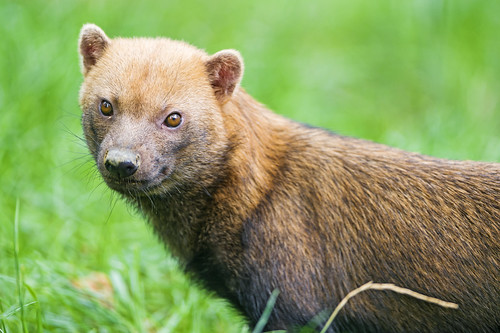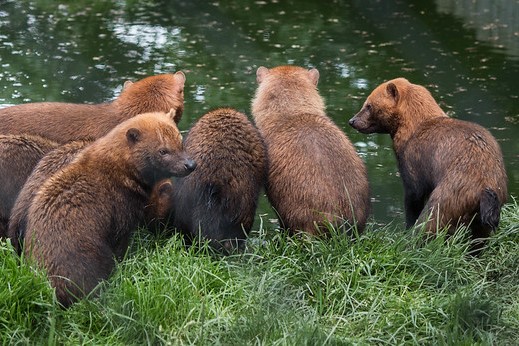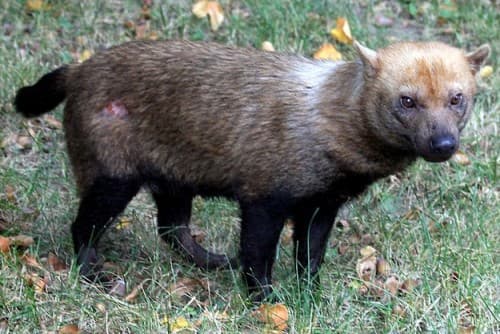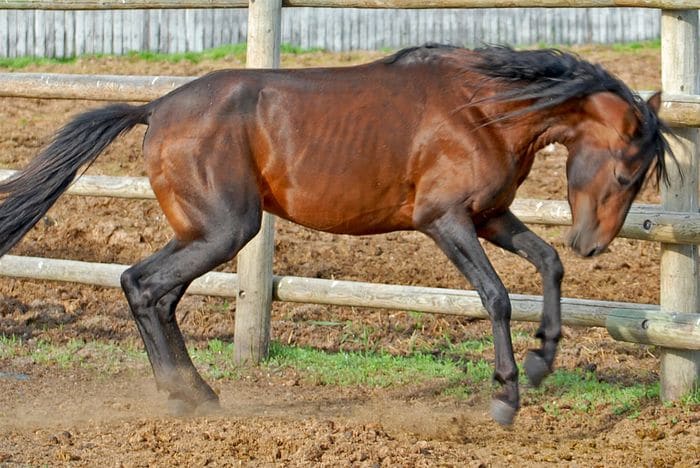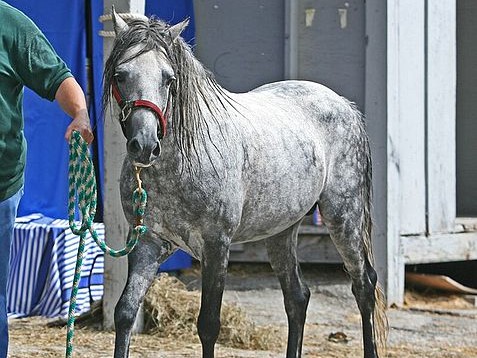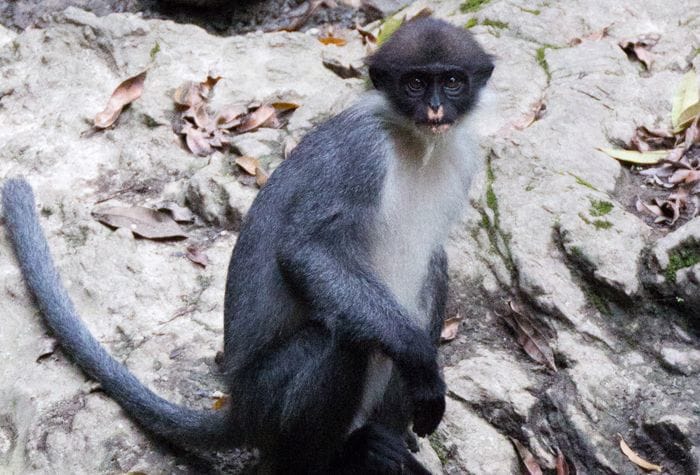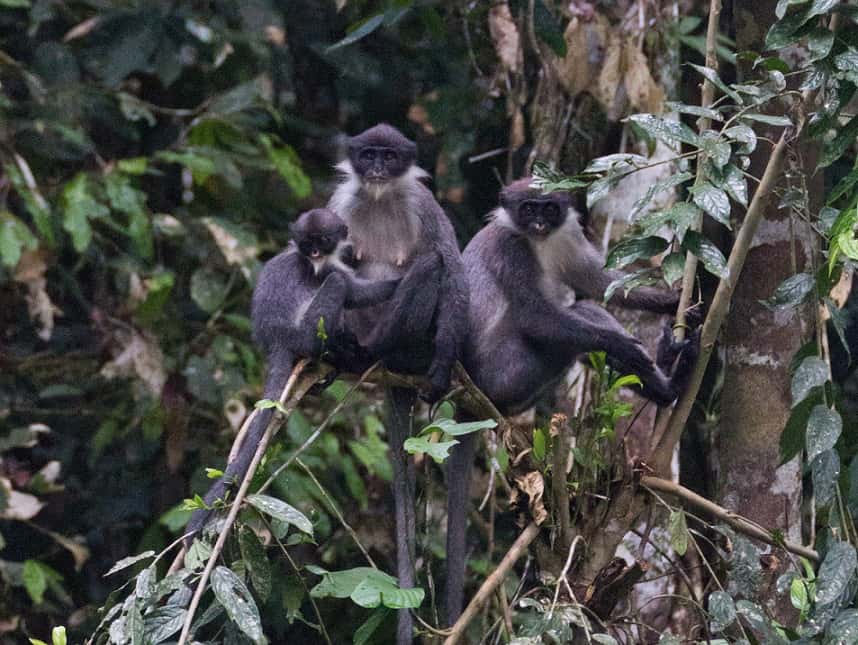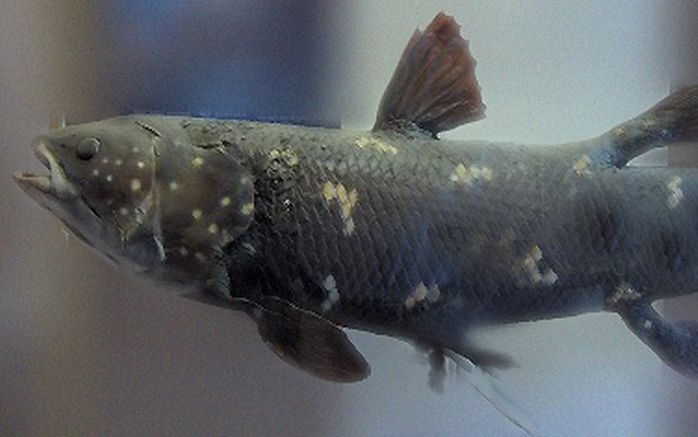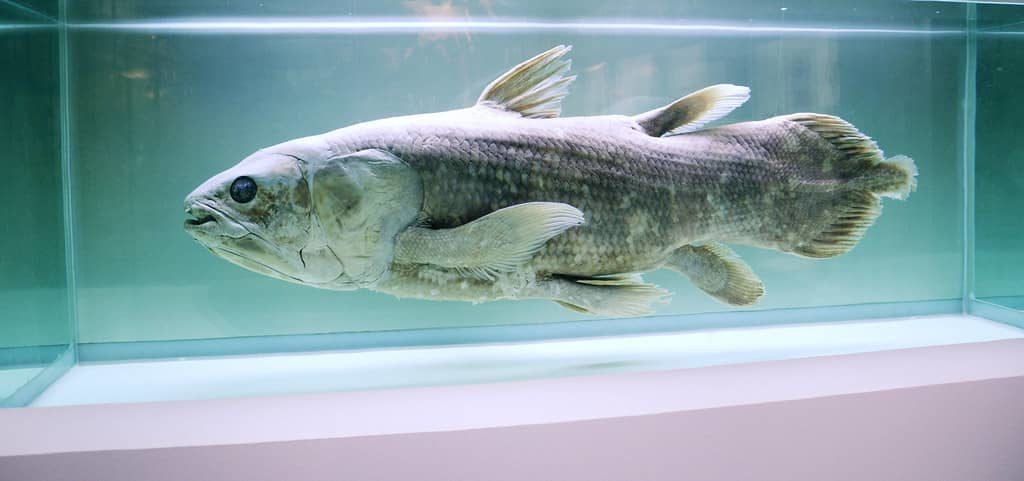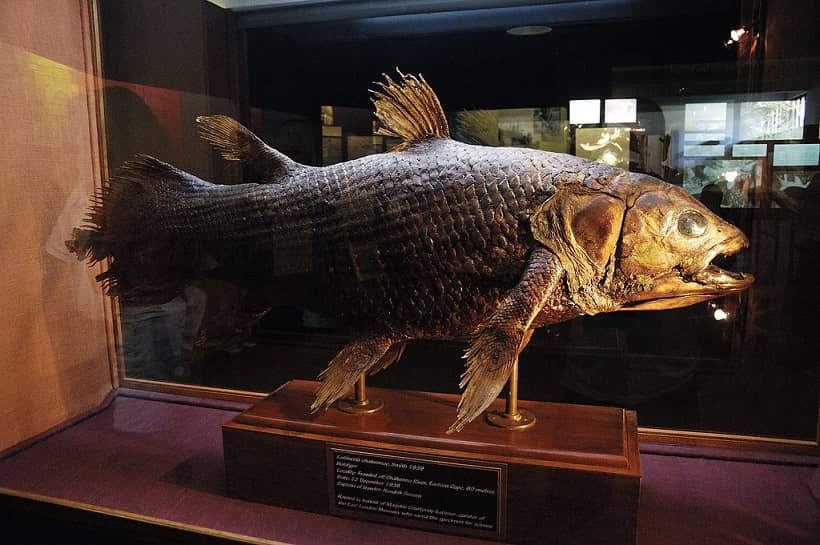Every year, scientists find animals they thought were extinct. Bumping into ‘extinct’ species is so common that there is a name for these creatures. They are called Lazarus Species, as in the biblical Lazarus who rose from the dead.
Let’s take a closer look at some of the coolest animals that were believed to be extinct… but are actually doing quite well, thank you.
1. Mahogany glider

The Mahogany glider was thought extinct for more than a century.
Naturalist Charles de Vis described this Australian marsupial in 1883. But then it was not seen again. That prompted scientists to think it was extinct -or that it had never actually existed. Luckily for de Vis’ reputation, the Mahogany glider was rediscovered in Queensland in 1989.
Turns out, it is a nocturnal animal that likes to live alone, and it is very shy and quiet. The Mahogany glider gets its name from the color of its fur, which ranges from brown to grey. Its closest relative is the squirrel glider.
Just like its relative, the Mahogany can fly, or more accurately, slide through the air. It has a furry membrane that stretches from its front legs to its rear legs. The Mahogany uses this membrane like a parachute. It allows the marsupial to glide from tree to tree for an average of 30 meters.
These cute mammals are monogamous and live on treetops. They eat fruits, insects, and nectar. Their scientific name is Petaurus Gracilis.
2. Forest owlet

The Forest Owlet was thought extinct due to… a scientific scam.
In 1872, an Irish officer, Francis Blewitt, was serving in India. Blewitt saw this owl, captured it, and sent it to a British taxonomist who realized it was a new species.
During the following decades, more specimens were found in India. But in the 20th century, scientific expeditions searched for the owlet unsuccessfully. So in 1972, it was declared extinct.
Then in 1997, Pamela Rasmussen, an ornithologist from the U.S., did some detective work. She had been studying the preserved skins of the Forest Owlet. And she realized they did not match the owlet pictured in the bird books -the one scientists were looking for.
The confusion was the result of a scam committed by Colonel Richard Meinerzhagen in the 1960s.
Pamela headed to India to look for the bird with the new description. Soon, in November 1997, she found it. And since then, the owlet has been spotted all over Central India.
The Forest Owlet is diurnal, and with its powerful claws, it can catch animals twice its size. It mainly eats lizards, birds, rodents, and insects like big grasshoppers. Its scientific name is Heteroglaux Blewitti.
3. Bridled nail-tail wallabies
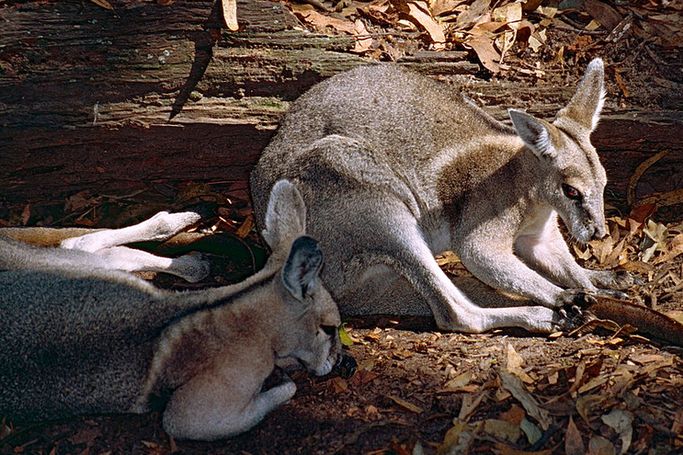
The bridled nail-tail wallaby is another nocturnal animal that likes to hide. Small wonder that the scientific community thought it extinct for more than 30 years. The last sighting of this relative of the kangaroos had been in 1937, in Australia.
Then in 1973, a fencing contractor read an article in a magazine about extinct Australian species. And soon after, lo and behold, he ran into one of them while working on a property in Queensland.
He recognized the wallaby because of its distinctive markings (a white line from the back of the neck to the forearms, a black line from the back of the neck down to the tail, and white markings on its cheeks). So he called wildlife services.
Since then, these wallabies have been sent to protected areas to keep them safe from predators. They live up to 12 years in captivity and up to 8 in the wild.
The bridled nail-tail wallaby is about a meter long and weighs up to 17 pounds (8 kg). They carry their young in the pouch for three months. And they live in dry environments like deserts, where they feed on shrubs and grass. These wallabies don’t need water, for they get it from their food.
By the way, another Australian wallaby, the Tammar, was also believed to be extinct since 1925. But it was rediscovered in 1998.
4. Bermuda petrel

When Christopher Columbus reached the Caribbean in 1492, the Bermuda Petrel was everywhere.
Hungry Spanish sailors hunted up to 4,000 petrels a day. Fast-forward to 1620 and, unsurprisingly, the bird was thought to be extinct. Not one sighting for almost 300 years.
Then, in 1906, Louis Mowbray, director of the Bermuda Aquarium, found an unknown live bird in a crevice. Ten years later, R.W. Shufeldt compared that bird’s bones to the bones of the ‘extinct’ Bermuda Petrel… and it was a match.
So in 1935, an expedition searched Bermuda for the bird. They were not successful. But later that same year, another unknown bird hit St. David’s lighthouse mid-flight. It was a Bermuda Petrel.
Finally in 1951, an expedition found 17 pairs of this nocturnal, monogamous animal nesting on an island.
The Bermuda Petrel can live for years at sea without touching land. It eats shrimps, small squids, and fish. And although it nests in 6 remote islets of the Bermudas, it sometimes flies all the way to Canada.
5. Bush dog
Danish biologist Peter Lund first found fossils of this species in a cave in Brazil in 1842. And the scientific world believed it was an old, probably prehistoric animal. They thought this weird dog was long extinct.
Yet a few decades later, Bush dogs were spotted in central and north South America. And in 2016, biologists discovered Bush dogs living as far north as Costa Rica (Central America).
Despite its vast dwelling area, this dog is quite hard to spot in the wild. There have been only a few reported sightings here and there over the years. Regardless, if you have your heart set on gazing upon one, it can easily be done. Zoos all over the world have specimens nowadays.
These canines are diurnal and usually hunt in packs of up to 12. They eat small mammals, snakes, and birds. Bush dogs have webbed feet, thanks to which they are excellent swimmers. The skill comes in handy since they mainly live in rainforests, flooded forests, and wet savannas.
The Bush dog, aka Speothos Venaticus, is about the size of a house cat. Some indigenous tribes that live in the rainforests of Brazil and Ecuador keep them as pets.
6. Short-nosed sea snake

During the 70s and 80s, the Short-nosed Sea Snake was seen everywhere in Ashmore Reef, off the coast of Australia. So when they disappeared from Ashmore in 1998, biologists feared the worst.
From 2000 to 2012 scientific expeditions went looking for them unsuccessfully.
Then in 2015, a park ranger saw two snakes swimming near Ningaloo Reef. Thinking he had spotted the extinct snakes, he took a picture and sent it to James Cook University. The ranger was right. They were short-nosed sea snakes.
Until then, scientists had thought these creatures could only live in Ashmore Reef. But they happen to be a lot more adaptable than that.
Aside from the population in Ningaloo, they have also been spotted in Exmouth Gulf in recent years. Both locations, Ningaloo and Exmouth, are close to one another, in Australia.
The Aipysurus apraefrontalis is venomous and eats small fishes and eels. It can stay underwater for up to two hours, then, it has to swim to the surface for air.
7. Caspian horse
This one is quite the resurrection. The Caspian horse was believed to be dead for over a thousand years.
The Caspian’s picture appears in ancient Middle Eastern art -it is an appallingly small horse. And it was also described by ancient Mediterranean writers. Yet the Caspian seemed to have gone extinct at around 700 AD.
In 1965, an Iranian prince, Narcy Firouz, and his wife Louise had a riding school in Tehran, Iran. They wanted a small horse with an even temper for teaching horsemanship to children.
Locals told them a breed like that lived in some remote villages next to the Caspian Sea. The couple decided to go and check. And they found these small horses which they called Caspian.
An adult Caspian is the size of a pony, although they are not ponies. They are proportioned like horses and move elegantly and smoothly. They are also great jumpers.
The Firouz took a few hoses back to Tehran to breed them. In the 1970s, they exported some to England. And in the following decades to Australia, New Zealand, and the U.S.
8. Bavarian pine vole

This rodent was known to live in Bavaria, Germany.
The population started to diminish and then, in 1962, the last Bavarian Pine Vole was seen.
It was presumed extinct until 2000. In that year, an Austrian scientist caught one in a live trap in Tyrol, Austria.
The Microtus Bavaricus -its fancy name- lives in the Alps, at an altitude of 600 to 1,000 m (2,000 to 3,280 ft). The population is spread between Italy, Austria, and Germany.
9. Kaempfer’s woodpecker

Encounters with this Brazilian bird have been sporadic, at best. German Emil Kaempfer collected the bird’s plumage in 1920. And in 1926, a female was caught.
Then for 80 years, the Kaempfer woodpecker flew under the radar. No one saw it, so it was believed extinct.
Then in 2006, to their surprise and joy, biologists caught a male in their nets.
The Celeus Obrieni lives in Brazil’s tropical savanna. It usually lives near water and bamboo canes, for it feeds on the ants that live inside the bamboos.
10. Miller’s grizzled langur
Canadian scientists wanted to capture the elusive Bornean clouded leopard. So they went to Borneo in 2011 and set up cameras in the Weahea rainforest.
But the cameras recorded more than what they had bargained for. Aside from the coveted leopards, they filmed a Miller’s Grizzled Langur, a species that was believed extinct since 2004.
After the team from the Simon Fraser University of Vancouver saw the footage, they went to the jungle looking for the langurs. And they found a whole population.
The Miller’s was not known to live in the Weahea rainforest, which is home to other primates such as orangutans and gibbons.
11. Madagascar pochard

The Madagascar pochard is a medium-sized duck.
It was rediscovered in 2006, fifteen years after it had last been seen. Turns out, the duck had left its usual habitat and migrated to a crater lake, which is an unusual place to live.
After the re-discovery, biologists took some specimens and bred them. Twenty-one of them were released in Lake Sofia, another lake in Madagascar, in 2018.
So now, two known populations live on the African island which, despite its relatively small size, contains 5% of the biodiversity of the world.
This pochard lives mostly on water and feeds on insects. They are about 50 cm long.
As long as we are talking about Madagascar… the Madagascar serpent eagle is another Lazarus Species from this island. It was feared extinct since 1930, but it was rediscovered in 1993 by biologists of The Peregrine Fund.
12. Coelacanth
No article on Lazarus Species would be complete without the Coelacanth. It’s a classic.
A Christmas miracle: finding a prehistoric creature
It was two days before Christmas, in 1938, when a fishing trawler returned to the port of East London, South Africa. After docking, its captain Hendrick Goosen phoned his friend Marjorie Courtenay-Latimer, a curator at the local museum. As usual, Hendrick asked her if she wanted to come to inspect the catch, in case she found anything interesting.
Marjorie went and saw an unknown blue fish of 1.5 m (5 ft), which she described as the most beautiful fish she’d ever seen. The bird expert knew it was important, so she searched her books for a match, but to no avail. Then she sent a drawing to a specialist, ichthyologist James Leonard Smith. He immediately recognized it as a Coelacanth, a species only known from the fossil record. Scientists believed it had died out 65 million years ago.
Our ancestor, the coelacanth

It was not the first time the Coelacanth was filling scientists with joy, either. Back when its first fossils were found, evolutionists were delighted because the specimen bridges the gap between fish and amphibians.
Biologists believe life began in water. Slowly, fishes would have morphed into amphibians. And amphibians would have evolved into land animals.
The coelacanth may be the missing link, our marine ancestor.
Back to 1938. That first live coelacanth could not be preserved. So South African scientists offered a reward to whoever brought in another specimen. After a 14-year wait, they got their wish.
Fisherman Ahamadi Abdallah found one in Comoros Island. Ahamadi couldn’t understand why all the fuss over the ‘gombessa,’ an inedible fish locals caught now and then by accident.
Then, someone spotted a second species of the coelacanth in a fish market in Indonesia in 1997.
The coelacanth’s habits
Since then, scientists have found more specimens. And they have been studying them in the wild, as well.
The coelacanth lives in waters up to 700 m deep. It is nocturnal. During the day, it hides in deep caves. And at night, it hunts small sharks, eels, other fish, or squids.
This fish can grow to up to 2 m (6 ft) and weigh some 90 kg. It can swim backwards, belly up, or head down. Scientists believe the coelacanth lives 60 years or more.
So far, only adults have been seen. Where the young live, remains a mystery.
More Articles
